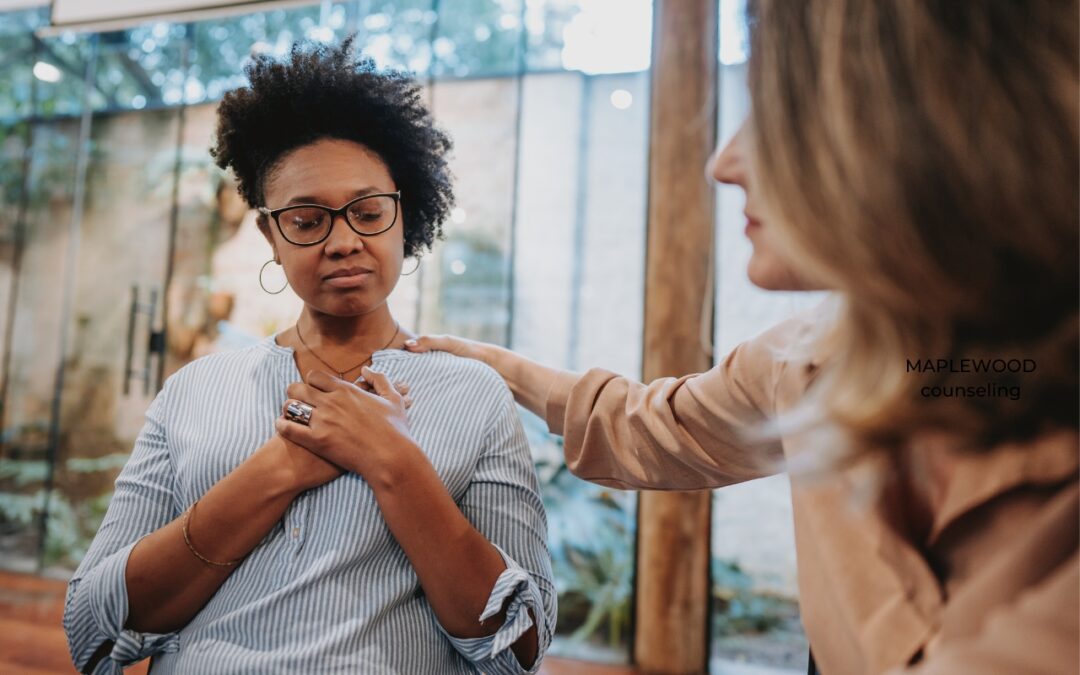
Cutting Ties : The Impact of Cutting Someone Out of Your Life
Cutting Ties : The Impact of Cutting Someone Out of Your Life
Why Cutting Ties Happens
Cutting Ties : The Unseen Impact of Cutting Someone Out of Your Life
In the intricate web of personal relationships, sometimes threads must be severed for the greater good of an individual’s mental and emotional health. We all crave healthy relationships that nurture and support us, yet there are moments when people choose to cut others out of their lives. This decision is rarely made lightly but can lead to profound personal growth, healing, and self-discovery. In this blog post, we will explore the reasons behind this difficult choice, the impact it has on both parties involved, and how everyone can move forward toward a healthier, more fulfilling future.
Introduction
Relationships are integral to who we are, shaping our experiences and influencing our well-being. However, maintaining these connections is not always straightforward. When faced with betrayal, unresolved conflict, or a shift in life’s path, individuals may find themselves at a crossroads, questioning the value of certain relationships. Cutting ties can be a painful but necessary step toward achieving personal peace and self-improvement. This discussion is particularly relevant for couples, family members, friends, and anyone seeking advice on building healthier relationships.
Reasons for Cutting Ties
Betrayal and Trust Issues
Betrayal can leave deep emotional scars, shaking the foundation of trust that relationships are built on. Whether it’s a partner’s infidelity, a friend’s disloyalty, or a family member’s deception, these experiences can lead to feelings of hurt and resentment. Such breaches of trust often force individuals to reevaluate their relationships altogether, deciding whether it’s worth mending or moving on.
Trust is not easily rebuilt once broken. Some people may attempt to forgive and repair the relationship, which can require immense effort and commitment from both parties. However, not everyone is willing or able to forgive, leading them to cut ties to protect themselves from future pain. Ultimately, prioritizing one’s emotional safety is not only understandable but necessary for healing.
Additionally, the complexity of betrayal can vary based on the closeness of the relationship. The deeper the emotional investment, the more profound the impact. Recognizing when trust cannot be restored is crucial in deciding whether to move forward alone or together.
Unresolved Conflict
Conflict is an inevitable aspect of any relationship. When left unresolved, it can fester and create tension, driving a wedge between individuals. Continuous arguments over the same issues can lead to exhaustion and frustration, prompting some to question the viability of the relationship itself.
Ignoring or avoiding conflict can exacerbate problems, making it essential to address disagreements head-on. However, when efforts to resolve conflicts prove futile, cutting ties may become the only viable solution. This decision allows individuals to reclaim their peace and move forward without the burden of ongoing disputes.
In some cases, unresolved conflict stems from fundamental differences in values or beliefs, which may not be reconcilable. Recognizing when compromise is impossible can help individuals make the difficult choice to end the relationship, freeing both parties to pursue connections that align better with their values.
Growing Apart
Over time, people naturally evolve, and so do their relationships. What begins as a deep connection may gradually fade as individuals’ paths diverge. This process of growing apart can occur among friends, family members, or romantic partners, leading to feelings of distance and disconnection.
Growing apart doesn’t necessarily mean there’s animosity or conflict; rather, it reflects the natural progression of life. Sometimes, the best way to honor a cherished relationship is to acknowledge that its time has come to an end. Cutting ties allows individuals to pursue new opportunities and experiences that align with their current goals and aspirations.
Recognizing the signs of growing apart can be challenging, but it’s essential to approach the situation with honesty and compassion. Accepting that change is a part of life can help individuals gracefully transition into new phases and relationships.
Toxic Behavior and Negative Impact
Toxic behavior is detrimental to a person’s mental and emotional health. Whether it’s manipulation, control, or constant negativity, these behaviors can erode confidence and well-being. Prolonged exposure to toxicity can lead to feelings of inadequacy, anxiety, and depression, making it vital to address the issue.
Identifying toxic behavior is a crucial step in deciding whether to maintain a relationship. If efforts to communicate and change prove ineffective, cutting ties may become necessary to protect oneself from further harm. Healthy relationships should uplift and empower, not drain and diminish.
Choosing to distance oneself from toxic individuals is a courageous act of self-care. It involves acknowledging one’s worth and setting boundaries that prioritize mental and emotional wellness. This decision paves the way for nurturing connections that contribute positively to one’s life.
Emotional and Mental Health Prioritization
At times, prioritizing emotional and mental health necessitates difficult decisions, including cutting ties with certain individuals. Relationships that induce stress or anxiety can hinder personal growth and happiness, making it essential to evaluate their impact on one’s well-being.
Taking charge of one’s mental health may involve distancing oneself from those who perpetuate negative emotions or contribute to an unhealthy dynamic. This decision is not about blame or condemnation but about taking proactive steps to foster a more balanced and fulfilling life.
Self-care is an ongoing process that requires introspection and commitment. By putting one’s mental and emotional health first, individuals can create a supportive environment for themselves, allowing for healing and personal development.
Life Changes and New Directions
Life is a series of changes and transitions, each bringing new opportunities and challenges. Whether it’s a career shift, relocation, or personal transformation, these changes can impact relationships and prompt reevaluation.
Sometimes, life’s new directions necessitate letting go of connections that no longer serve one’s current path. While parting ways can be bittersweet, it opens the door for new experiences and friendships that align with one’s evolving identity.
It’s important to approach these transitions with empathy and understanding, both for oneself and others. Accepting life’s unpredictability allows individuals to adapt and thrive in new environments, fostering resilience and growth.
Impact on the Person Cutting Ties
Choosing to cut ties can have significant psychological and emotional effects on the person making the decision. While the intention is to improve one’s well-being, the process can be accompanied by feelings of guilt, sadness, and ambiguity.
The decision to distance oneself from a relationship is often driven by a desire for self-preservation and personal growth. However, it’s essential to acknowledge and address the complex emotions that may arise. Seeking support from friends, family, or professionals can provide guidance and reassurance during this challenging time.
Over time, individuals may experience a sense of relief and empowerment as they create space for new opportunities and connections. By focusing on self-care and self-discovery, they can cultivate a more authentic and fulfilling life.
Impact on the Person Being Cut Out
Being cut out of someone’s life can be a painful and disorienting experience. The sudden loss of a relationship can evoke feelings of rejection, confusion, and grief. It’s important for individuals facing this situation to acknowledge and process their emotions.
Understanding the reasons behind the decision can provide clarity and closure. While it may be challenging, reflecting on the relationship’s dynamics and one’s own actions can lead to valuable insights and personal growth.
Seeking support from loved ones and engaging in self-care practices can aid in healing and moving forward. By focusing on self-compassion and resilience, individuals can rebuild their sense of identity and create new, meaningful connections.
How to Heal and Move On
Healing from the end of a relationship requires time, patience, and self-reflection. Both parties involved can benefit from taking proactive steps to process their emotions and learn from the experience.
For those who cut ties, practicing self-compassion and setting healthy boundaries is essential. Engaging in activities that promote well-being, such as exercise, meditation, and creative pursuits, can aid in the healing process.
For those who have been cut out, acknowledging and expressing emotions is a vital step toward healing. Seeking support from trusted friends, family, or therapists can provide comfort and guidance during this time of transition.
Ultimately, both parties can benefit from focusing on personal growth and self-improvement. By reflecting on the lessons learned and setting intentions for the future, individuals can cultivate healthy, fulfilling relationships moving forward.
Conclusion
In the complex landscape of personal relationships, cutting ties can be a necessary step toward achieving personal peace and well-being. While the decision is often difficult, it’s guided by a desire for healthy relationships and self-care. By understanding the reasons behind this choice and its impact on both parties, individuals can approach the situation with empathy and compassion.
As we strive for meaningful connections, it’s essential to prioritize self-care and respect in our relationships. By fostering an environment of understanding and growth, we can create a more harmonious and fulfilling life for ourselves and those around us.
If you need help after cutting ties with someone, reach out.





